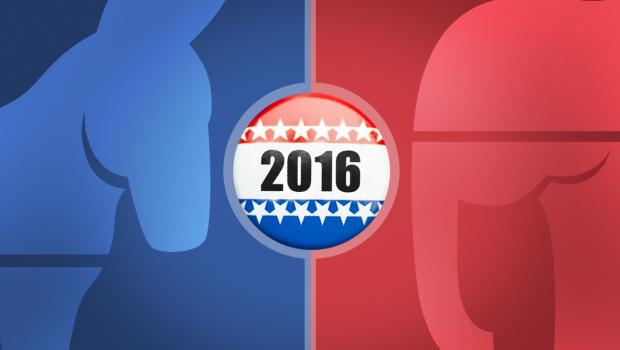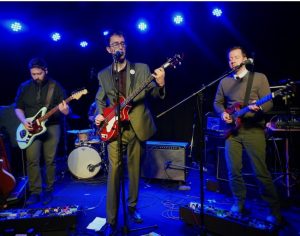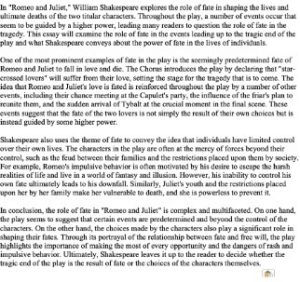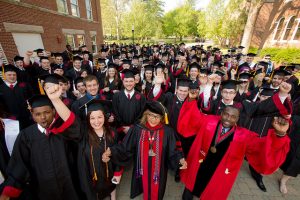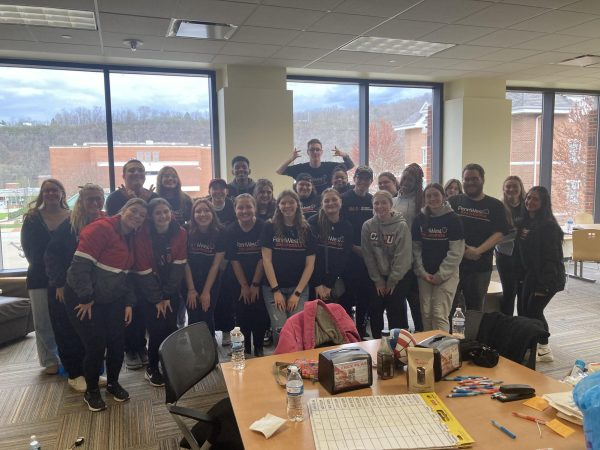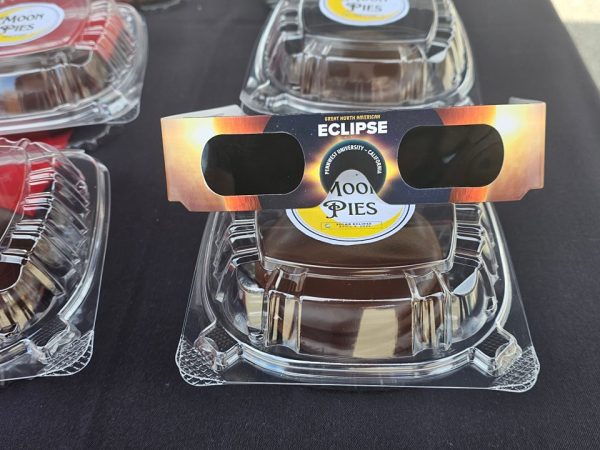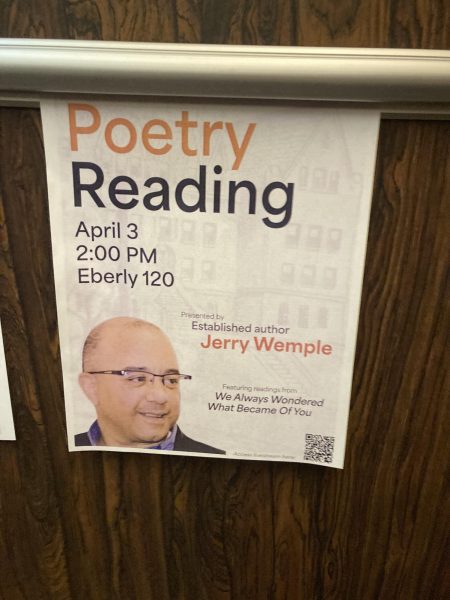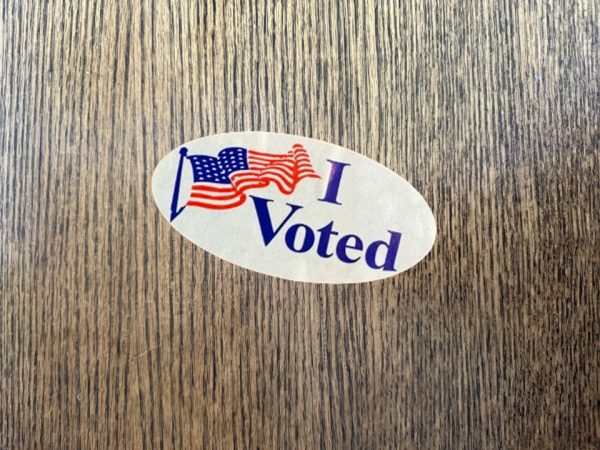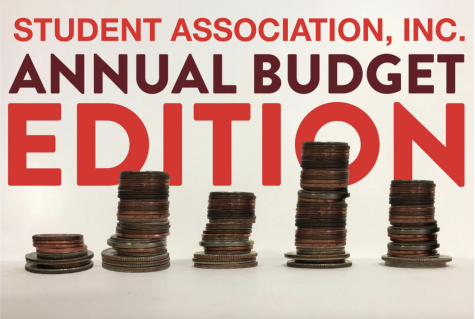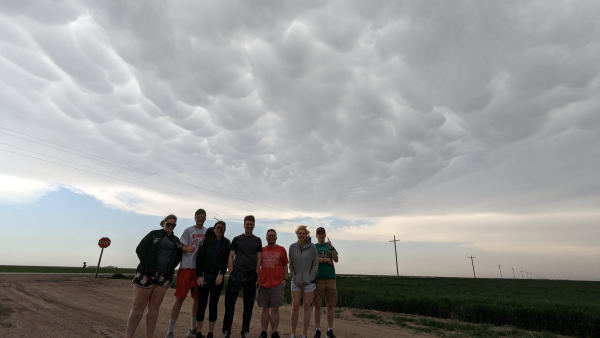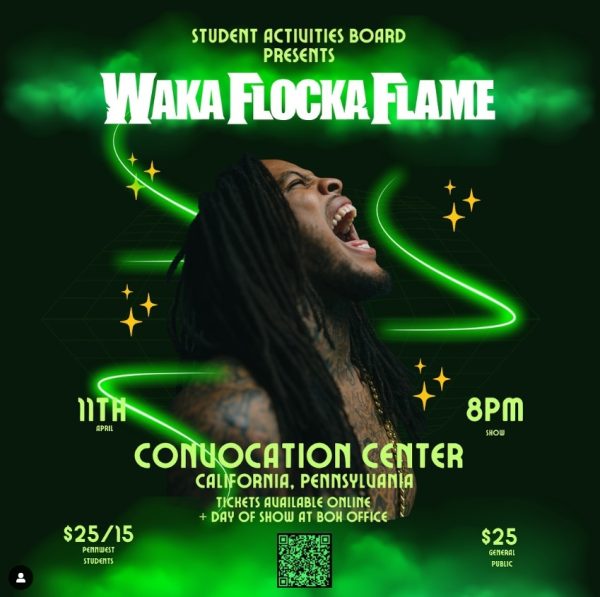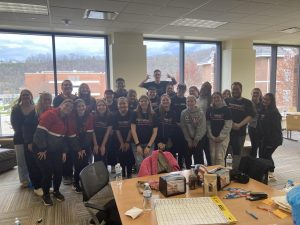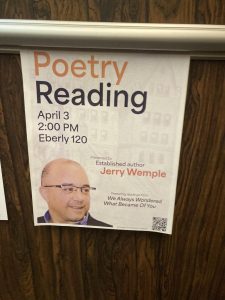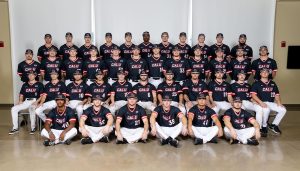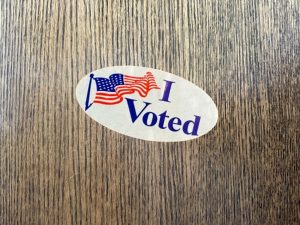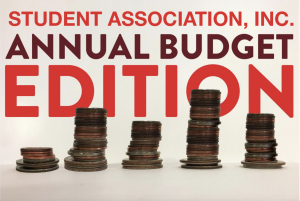Explaining the Election 2016 results
November 21, 2016
“This is such an interesting election, there is no doubt about that,” said John Delano of KDKA-TV on the night of November 15th in Room 110 of Eberly Hall.
Delano was the moderator of a bi-annual election analysis forum held at California University of Pennsylvania, sponsored by the campus chapter of the American Democracy Project, Office of the President, Office of the Provost/Academic Affairs, College of Liberal Arts, and the Department of History, Politics and Society.
The forum was open to the public and held a panel of four experts, all offering their ideas on the election results and providing data to back their theories.
Before opening the floor to the panel, Delano opened by mentioning how Hilary won the popular vote while Trump winning in the Electoral College, and how 17,000 votes determined the difference in the election, out of 123 million votes. Delano said the three states that set Trump ahead were Michigan, Wisconsin and Pennsylvania.
After this sharing of information, Delano asked how this happened. “Was it women in the suburbs,” asked Delano. “Was it angry white males in the cities? Was it African-Americans not voting?”
The first panelist to speak was Alan Abramowitz, a professor of political science at Emory University. Abramowitz talked about the surprising shift of white voters to Trump. He highlighted how the typical voters for Trump were White Evangelicals, and Clinton supporters were largely minority voting groups.
“The biggest thing was the shift of white working Americans voting for Trump. They decided the election,” he said. States with high diversity and college educated people moved toward the Democrats, he said, and states with low diversity and non-college educated people moved toward Trump.
He talked about the small margins in the race, saying 22 states decided the election, and they were decided by just 20 points or more. Abramowitz mentioned that 53 percent of Trump supporters voted against kicking immigrants out of the country and said that Trump is the most unpopular President elect in history.
He added that the Latino and African-American voting group, the largest voting demographic supporting Clinton, will only continue to grow.
“We will spend a year trying to understand this election,” said Abramowitz. “This was an electoral college misfire,” he said, explaining that there have been five in history.
Costas Panagopoulos of Fordham University was the next panelist up. His topic was how the vote changed late into the election. “I think many of us are surprised at the election results,” said Panagopoulos, “but, in retrospect, we really shouldn’t have been surprised.” He attributed the shift in favor of Trump because of late breaking developments in the campaign.
“The fact that she won the popular vote is a testament of her strength,” Panagopoulos said. Based on the exit polls, Clinton was unable to piece together the Obama coalition, he said. “She did worse than Obama did in 2012.”
He also showed how Trump received free media coverage through March of this year, about two billion dollars’ worth, and didn’t pay nearly as much as Clinton or Sanders during the campaigning.
The next panelist to speak was Louis Jacobson, deputy editor and senior writer for PolitiFact.com and staff writer for the Tampa Bay Times. He focused primarily on the road ahead, and what it meant for Democrats and Republicans. The GOP has a huge lock on federal and state governments, and the Democrats have a long road ahead of them.
He said the Democrats have a tough two years ahead of them, but they have a filibuster in the Senate. Jacobson talked about the difficulties Donald Trump faces. Donald Trump has big promises to uphold that he may not deliver. Jacobson fears that Trump, not being from a policy background and changes his views consistently, will allow Republicans to self-govern themselves, which is worse for the Democrats.
“Republicans have gotten enormous power out of fewer votes”, he said, “Democrats have a good long term outlook but the results of this election show they are not there yet.”
Looking forward, Jacobson said Trump has set some high bars and he can’t do it on his own. “His biggest challenge will be fulfilling his goals.”
The last panelist to speak was William Binning, chair emeritus of the Department of Political Science at Youngstown State. Binning said Trump was elected for his image, not for his merit. Binning talked about Trump being elected because of the desire of his supporters to return to an America 40 years ago. Binning called Trump and unqualified candidate that won because of his media usage.
“What would Republicans be thinking if Trump had lost?” Binning said, “They’d be looking for ways to amend their system.”
All four panelists agreed that the Electoral College is an antiquated system but agreed that doing away with it is probably not going to happen because it requires a change in the U.S. Constitution. All agreed that is unlikely that two-thirds of Congress would ever agree to change it.
After the panel spoke and questions asked by the audience, Delano asked for their predictions as to what will happen with the Senate and the House. Binning thinks the Republicans will lose the House, but keep the Senate. Jacobson thinks the Republicans will keep the Senate, and gain two seats, while the House goes Republican by a small majority.
Panagopoulos also thinks the Republicans will keep the Senate and gain two seats, but the Democrats will take the House. Abramowitz thinks the Republicans will keep the Senate as well, and take three seats, while the Democrats will pick up the House. Abramowitz added his belief that the Democrats will gain on all state levels of government.

